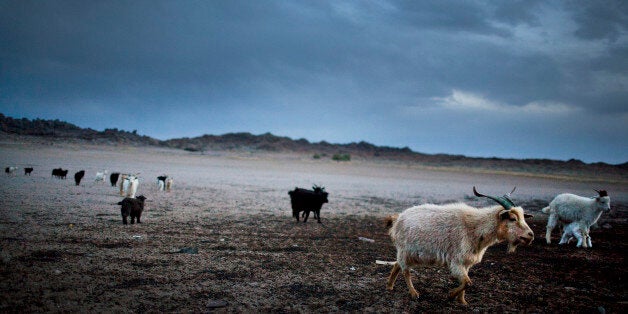
Last year was by far the hottest year on record, and in 2016 we've once again had some of the warmest months since record-keeping began in 1880, with temperatures well above long term global averages.
The results of climate change are numerous and devastating, from the melting of the polar ice caps to the rapid population decline of species like tigers and polar bears to recent reports that large sections of the Great Barrier Reef have been bleached by warmer waters and are dying off at alarming rates.
So why aren't we doing more to address global warming? A Game of Thronesfan theory that recently caught my attention speculates that the dreaded White Walkers marching steadily south are a metaphor for climate change, and the more I've thought about it, the more it bothers me.
Like the inhabitants of the Seven Kingdoms, we know that what's coming is bad and could end life as we know it, but somehow it still seems abstract and far removed from our everyday lives, so it's easy to ignore it and carry on with business as usual.
It's understandable, of course, because for those of us who aren't in a position to pass laws or fund research, it does seem like there's very little we can do to make a meaningful impact.
But unlike the inhabitants of the Seven Kingdoms, each of us can make small changes that collectively could go a long way towards helping us avoid global catastrophe.
With this in mind, I've done some research and lined up some of the simplest things we can all do to help protect the environment today. So if you've been standing on the sidelines waiting for someone else to intervene, here's what you can do instead.
1. Change your driving habits
Transportation accounts for about 14% of global greenhouse gas emissions, and the majority comes from road transport, so changing your driving habits is an excellent way to reduce your impact on the environment while also saving money.
For shorter distances, walking or cycling are by far the better options, but when this isn't possible, taking public transportation or carpooling with colleagues can also help to reduce CO2 emissions.
2. Eat less meat
Agriculture is one of the biggest contributors to global greenhouse gas emissions, for a large part due to the methane gasses produced by livestock like cows and sheep. So eating less meat or cutting it out of your diet entirely is a good way to reduce your ecological footprint.
If this sounds scary or difficult to you, start by implementing one or two meat free days each week and try experimenting with different protein-rich vegetarian or vegan ingredients like paneer, halloumi, dal and chickpeas. I discovered some of my favourite dishes, including falafels; hummus and even cheesy tamales after implementing meat-free Mondays, so have some fun with it and don't be afraid to get a little adventurous.
3. Avoid packaging
Almost everything you buy in the supermarket, from meat to vegetables, comes neatly packaged in plastic containers or bags. But while pre-packaged food can be convenient, it also generates a lot of waste, especially when you consider that most of the packaging is tossed out the minute you get home.
Shunning all packaged products is no easy task (although not impossible), but you can reduce the amount of waste you produce by shopping at farmer's markets instead of supermarkets, carrying your own bags or reusable containers and buying in bulk whenever possible.
4. Stop drinking bottled water
While many of us have bought into the idea that bottled water is better for us, research shows that most bottled water is no safer or healthier than tap water, and since bottlers aren't required to list their source, what you're drinking may often simply be glorified tap water.
Drinking thousands of litres of bottled water each year also means we're generating a lot of unnecessary waste, so if you're concerned about the chemicals or pollutants in tap water, consider investing in a good water filter and a few stainless steel water bottles to carry with you when out and about.
5. Use technology to conserve energy
Believe it or not, greener living doesn't necessarily require you drop off the grid and start living like it's the 1800s. There are countless apps and gadgets that can help you with everything from regulating the temperature in your home in order to conserve energy to powering your electronics with solar energy.
If you're not sure where to get started, this infographic gives some examples of how technology can be used to conserve energy, and while not all will meet your needs or fall within your budget, thinking about how technology can help us live a greener lifestyle is an inspiration in itself.
6. Buy second-hand
Buying clothing, furniture or even electronics second-hand can help ease some of the strain on the environment by keeping things out of landfills and cutting down on the manufacturing of new items.
You can often find excellent designer clothing, shoes and furniture at thrift stores and yard sales, but sites like Gumtree, Amazon or eBay also make it easy to find everything from second-hand clothing to used cameras, books and musical instruments.
7. Eat local and seasonal
Eating fruits and vegetables that are flown halfway across the world or grown out of season can put a big strain on the environment, not only in terms of transport, but also the pesticides and energy that goes into producing food out of season.
If you're not sure what produce is imported or when it's in season where you live, the easiest way to get around this is to start shopping at farmer's markets, as the produce there is generally both local and in season, but don't be afraid to ask questions about how and where it's been grown.
